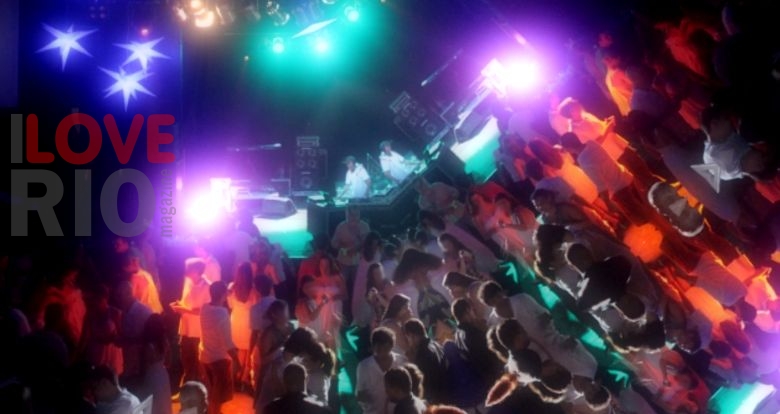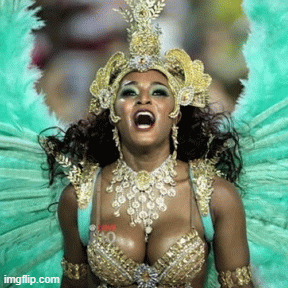Music
Famous across the globe for the unique, vibrant and culturally expansive music it has given birth to, Rio de Janeiro remains one of the most important cities for the development and dissemination of old and new genres.
I LOVE RIO explores important epochs in the city's profound musical history, showcasing old and new talent and divulging information about classical concerts and shows, festivals and parties across a variety of rhythms such as Samba, Forró, Jazz, Chorinho, Maracatu, and more.

A VITAL PART OF Carioca CULTURE
Music is an essential part of Carioca culture - just as importantly as the beaches and the forests that bless Rio de Janeiro, music in Rio permeates every aspect of life in the city.
As a city that lives, breathes and moves in music, Rio de Janeiro is characterized throughout the entire world as a shrine for beats enthusiasts and composers - Related to religion, identity, celebrations and a complete way of life, music finds new rhythms and roles in the town's soul day and night.
Such is the importance of music in Rio, that the city government routinely organizes and sponsors free concerts and festivals: up-and-coming performers, as well as famous Brazilian and international stars, routinely play at city funded events. Stars such as the Rolling Stones, Rod Stewart, the Black Eyed Peas, Lenny Kravitz, David Guetta, Stevie Wonder, and Roberto Carlos have all performed at free concerts on Copacabana or Ipanema beach - gathering huge crowds and enjoying spectacular success. Every new year's eve, a variety of free concerts are organized in several locations across Rio de Janeiro, welcoming both performers and audiences from all over the world.
Local, national, or international singers and musicians, are always given much respect and attention - several important streets, avenues and parks in Rio de Janeiro are named after Carioca musical leaders, who are highly regarded as legends and inspirations.
Antonio Carlos Jobim, writer of "Garota de Ipanema," possibly the most world-famous song composed in the city, is revered by welcoming every visitor in and out of Rio de Janeiro's territory, as the local international airport is named after him. One of the most traditional streets in the landmark district of Ipanema is named in honor of Vinícius de Moraes, co-author of the same song.
Songs are embraced and sang in the street, along with a passing car, or in the numerous karaokê bars that pepper the city. It is not rare to witness a small crowd suddenly singing or dancing to a popular song just for the pleasure of it, at a bar, on the beach, or at a fair.
Similarly to what Rio's beaches do, music in Rio de Janeiro often bridges the gap between ages and classes - during carnival, Samba is a clear social equalizer, and throughout the year often the young and the elderly sing and dance to the rhythms of the same songs, in the same places.
Cariocas love music and love their city - as a result, many of the lyrics of numerous pop songs, Samba, and Bossa Nova compositions are about Rio de Janeiro, or their love for the Marvelous City. Portrayed in many loving ways, Rio de Janeiro has been, and continues to be, the most celebrated Carioca muse.
Dating back to the end of the nineteenth century, the most famous rhythm born in Rio de Janeiro is Samba, made even more popular by the internationally renowned carnival celebrations. However, the jazzy Bossa Nova was also created in the city and received lots of international attention since the 1962 hit song "Garota de Ipanema". Later, Funk Carioca, born in the favelas of Rio in the 1980's, has become an important and popular expression of local culture.
Samba is a great gem in the musical treasure of the Carioca people, but it is not the only one - a variety of other mixes and tunes bring life the wide array of sentiments and to describe the mesmerizing sides to the personality of this sultry city.
The Carnival is the time for Samba, and Samba is the voice of the Carnival - yet, this unmistakable tune is found around town all year long. Samba is Brazil's national sound, and it has diversified into numerous other rhythms and musical expressions, such as "Samba do Breque," a Samba with a very particular pace where the singer might present a new character, make a short humorous monologue or recite a message in the context of the composition. A Samba version of ballad, with the dance and joyous twist to the romantic lyrics, is the result of Samba Canção," which became quite popular around the 1950's and gathered a great number of supporters, both producers and consumers. It is also referred to as mid-year Samba, because it is commonly found outside the Carnival season.
Born from a loose mix between Jazz and a softer Samba beat, Bossa Nova is an iconic Carioca creation that has inspired thousands of artists around the world, and with an influence that continues to the present day.
Quieter and sophisticated, the name itself means "a new special way of making music" as "bossa" is a qualifier of the Carioca way, and "nova" indicates a renovation and evolution. This is how João Gilberto, Tom Jobim and Vinícius de Moraes, among many other stars and music geniuses, created in the 1950's the rhythm that would carry a feeling yet unknown to the world.
Two spins of a record are enough for the words "Bossa Nova" to come flowing up from one's hearts to one's ears - this is the effect that this particular genre has on those who feel it, as the rhythm can smooth all edges and magically place an audience in the land of joy, warmth and color: Copacabana.
The precious sounds of family, friends, joyous gatherings and spontaneous parties for which Rio de Janeiro is known can be identified with Pagode, a very well liked and supported musical style, which unites and expands all the most beloved characteristics of Samba - the beat and the lyrics, with the feeling and the opportunity to involve small and large crowds in one passionate song.
Being sociability one of the most significant cultural traits of the Carioca people, when it comes to enjoying music everyone joins the party, whether it is making it or singing along: in Rio the gregarious nature of music is paramount as is the rhythm itself.
A modern beat descending from the Favelas and taking over radio stations and night clubs is the Funk Carioca, sometimes just named "Funk". This beat includes rhythmical components from Electronic, Samba, Hip Hop and Rap. It is very popular in the younger crowds thanks to the catchy songs and prominent performers, as well as the mixes created by DJ's that fuse this genre with other representatives of dance music in the world.
Rio de Janeiro is home to over 160 neighborhoods, and naturally many developed a clear musical identity - being this in terms of establishments, popular local rhythms, or both.
Some neighborhoods are particularly marked by the drums, such as Lapa, the bohemian center of the city, where some of the best informal restaurants and bars are found. Many Cariocas and visitors choose Lapa to join in the fun of dancing and savoring the Rio's delights. In this landmark part of town are located some of the most famous and traditional establishments where Samba lives on, and where everyone gets stung by the dancing bee.
Other districts focus on different ambiances and styles - Ipanema is home to a number of traditional Bossa Nova establishments, and hosts live performances daily. Also in Ipanema, are several cultural centers and shops, where visitors can find books, records and memorabilia from the history and lives of the greatest exponents and the genre itself.
The Brazilian music industry is self-sustainable: there are enough musicians and composers in the scene to produce something for every taste in the audience which, given the large community and the wide variety of genres, is a remarkable accomplishment. This is also the reason why Brazilian music is so well known the world over, and why its quality is so high and its signature so unmistakable.
Live music in Rio de Janeiro is another of the city's great icons, and it is celebrated as the Sugar Loaf Mountain, the statue of Christ the Redeemer, or the black and white sidewalk of sunny Copacabana.
Concerts or large scale musical events are just part of city's musical landscape - whether it is for celebrating the beginning of a phase, a national or local holiday, chanting for the victory of a soccer team or for religious celebrations, Cariocas gladly join their hearts and voices in spontaneous choruses.
Music in Rio is a fundamental part of the Carioca's identity - understanding this allows a visitor to better understand the life of the city, and to create a deeper connection with the locals. Knowing a bit about Rio de Janeiro's musical culture and heritage will get the biggest, warmest smile out of any Carioca.


